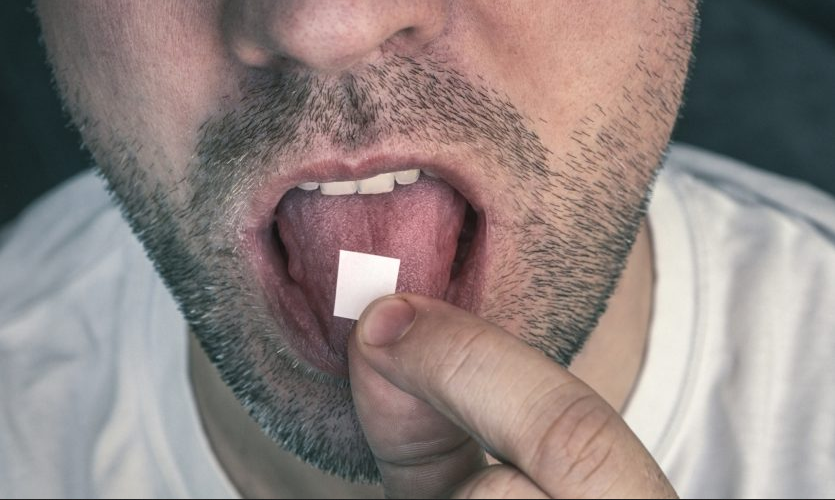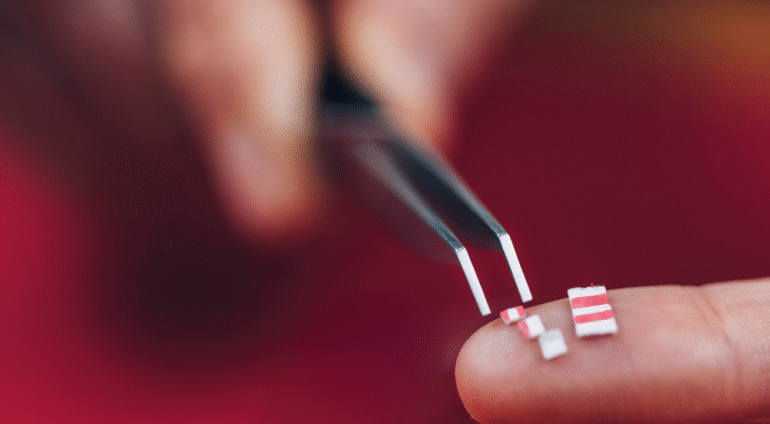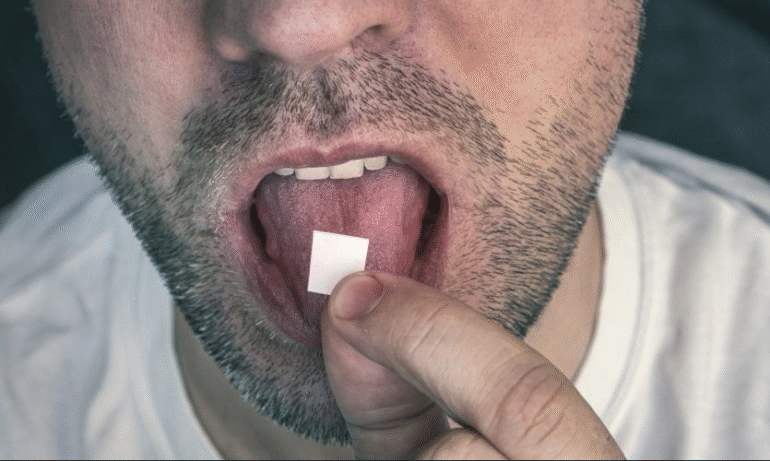- Your cart is empty
- Continue Shopping

Does LSD Show Up on a Drug Test? Detection, Duration, and What to Know
Ever wonder if standard drug screens can detect LSD (acid)? LSD is a powerful hallucinogen usually taken in tiny doses (as low as 15–20 micrograms), so ordinary urine or saliva tests typically won’t catch it. In fact, StatPearls (NCBI) bluntly notes: “A routine drug test does not detect [LSD]”. Standard 5- or 10-panel drug tests focus on drugs like marijuana, cocaine, amphetamines and opioids, not LSD. Only specialized laboratory tests (e.g. immunoassays or GC-MS) designed for LSD can find it.
Does LSD Show Up on a Drug Test?
LSD is most often ingested on blotter paper (“LSD sheets”) – small perforated sheets decorated with artwork – or as microdots (tiny pills) or liquid solution. Some people even take “gel tabs” (LSD embedded in a gelatin square). However, LSD is illegal (Schedule I in the U.S.). Any search for “LSD sheets for sale” or “buy LSD blotter online” is perilous – these offer no guarantee of safety and are unlawful.
What are LSD blotter sheets and gel tabs?
LSD (lysergic acid diethylamide) is a synthetic hallucinogen. Users typically take it orally on blotter paper – tiny squares of absorbent paper soaked in liquid LSD. Each decorated square (often called an LSD sheet or blotter) contains one dose. LSD also comes as small pills (“microdots”) or a liquid that can be dropped on sugar cubes. A newer form is gel tabs: LSD mixed into a gelatin candy-like square sparktorecovery.com. All of these deliver the same chemical, just in different formats. In all cases, LSD is illegal to possess or sell, so any website advertising “LSD sheets for sale” is promoting illicit activity and should be avoided.
Does LSD show up on a drug test?
No, not on standard screens. Because LSD’s active dose is so tiny, ordinary drug panels don’t detect it. As one review explains, “a routine drug test does not detect [LSD]. In practical terms, that means if you take a typical employer or probation 5-panel or 10-panel test, LSD won’t be found. Only specialized tests can identify LSD or its metabolites. For example, forensic labs may use enzyme immunoassays (EIA) or GC-MS to screen for LSD in urine or blood. Similarly, specific kits (like Abuscreen or EMIT immunoassays) can be configured to look for LSD. But these are not routine – they’re used only when LSD use is strongly suspected.

How long does LSD stay in your system (detection window)?
If LSD is tested, its metabolites clear fast. Typical detection windows are short:
- Blood: LSD stays in blood about 6–12 hours after use (so a blood test must happen soon after ingestion).
- Urine: LSD (or its main metabolite 2-oxo-3-hydroxy-LSD) can show up in urine for roughly 1–4 days. Some sources say up to 5 days in heavy use.
- Hair: In hair follicles, LSD can be detected for weeks to months after use. (Hair grows ~1cm/month, so a 3cm sample could reflect ~3 months of history.)
- Other: Saliva tests detect LSD for only a few hours (rarely used), and fingernail tests up to ~6 months.
These windows depend on dose, frequency, and individual metabolism.
What factors influence LSD detection?
Many factors affect how long LSD stays detectable. Key influences include:
- Time since use: Detection chances drop the further from ingestion.
- Dose and frequency: Higher doses or repeated use can lengthen detection time.
- Body metabolism: Slower metabolism, more body fat, or impaired liver/kidney function can prolong LSD’s presence.
- Hydration: More water intake can dilute urine and shorten detection time.
- Test sensitivity: More sensitive lab methods pick up LSD longer than crude screens.
In short, heavy or repeated LSD use is more likely to yield a positive test within those windows dnalegal.com.
What drug tests can detect LSD?
Only specialized tests for LSD or its breakdown products can detect it. Urine and blood tests in a lab (using methods like GC-MS) will pick up LSD or its metabolite if done within the above windows. Hair follicle tests can also detect LSD months later, though they are rare because LSD concentrations in hair are very low. (Asana Recovery notes hair tests “are not commonly used in standard workplace screenings” because LSD levels are so low.) Saliva tests for LSD aren’t reliable (detectable only minutes to hours after use).
In forensic or legal contexts, tests like Abuscreen (a broad screening immunoassay) or EMIT (a series of enzyme assays) can specifically look for LSD in blood, urine, or other fluids. These confirm LSD use by finding the drug itself or its primary metabolite (2-oxo-3-hydroxy-LSD). Standard workplace kits or home drug tests generally do not include LSD asanarecovery.com.
Why isn’t LSD on standard drug tests?
LSD’s tiny effective dose means only minuscule amounts enter the body. Most routine panels skip LSD because it’s both rare and hard to detect. As Carolina Center for Recovery explains, “LSD does not show up in any mainstream drug tests.” Another expert notes that LSD’s effects come from a tiny dose, so “it’s nearly impossible for your average urine test to detect it”. In addition, standard panels focus on common drugs of abuse (cocaine, THC, opioids, etc.), not hallucinogens like LSD. In short, unless there is a specific reason (legal suspicion, medical exam, etc.) to test for LSD, it usually simply isn’t screened.
Can you test for LSD at home?
No. Over-the-counter or home drug tests rarely include LSD in their panel. Most home kits are limited to common drugs (e.g., marijuana, cocaine, opiates). Detecting LSD requires sensitive lab equipment to measure its tiny molecules or metabolites. If someone needed an LSD test, they’d have to send urine or hair samples to a laboratory that offers LSD-specific assays.

FAQs
- Does LSD show up on a workplace or probation drug test? Standard workplace or probation screens usually do not include LSD. However, if an employer or court specifically suspects LSD use, they can order a specialized test. Only those targeted tests (for example, GC-MS urine tests) will catch LSD.
- How long after taking LSD will I test positive? On average, LSD will only be detectable in blood for up to ~12 hours, in urine for up to ~4–5 days, and in hair for up to 90+ days. (Exact times vary by dose, metabolism and test sensitivity.)
- If I microdose LSD, can it show up on a test? Yes – even small doses build up LSD’s metabolites over time. Regular microdosing means those metabolites can appear in urine or hair just like with larger doses.
- What does a positive LSD test mean? The detection of LSD or its metabolites means a person used LSD recently. There is no “safe” level of LSD use. Legally, any LSD detected can have consequences (probation violations, job issues, etc.), since LSD is illegal.
- Are LSD “blotter sheets” and “gel tabs” the same thing? They’re just different forms of LSD. “Blotter” or “sheets” refers to paper squares with LSD drops. “Gel tabs” are candy-like gelatin squares infused with LSD. Both are illegal and contain the same chemical. None of these are legally sold; any site advertising “LSD for sale” is likely a scam and unlawful.
- Is LSD addictive or harmful? LSD is not physically addictive, but it is highly potent and can cause intense psychological effects. Because of its power and unpredictability, LSD can lead to dangerous behaviors or long-lasting mental issues (like flashbacks or persistent hallucinations). Being caught using LSD can also have serious legal consequences since it’s a Schedule I drug.
